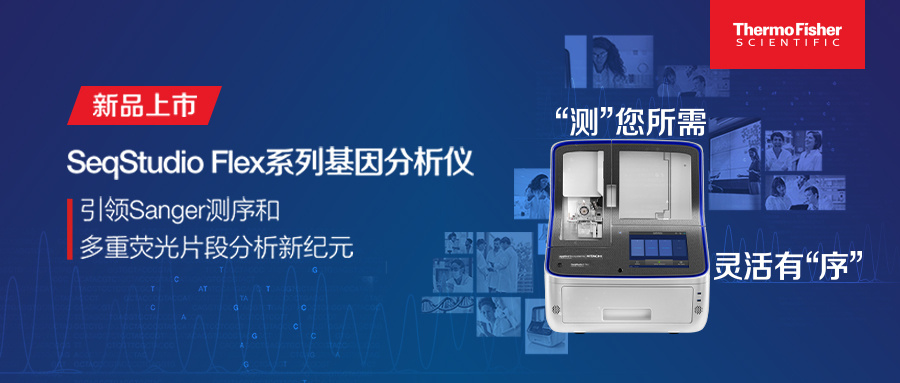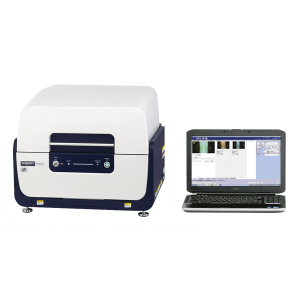小鼠3型毒蕈碱乙酰胆碱受体(M3R)
小鼠3型毒蕈碱乙酰胆碱受体(M3R)
Mouse M3R ELISA Kit
Catalogue Number: MG3782
(96Tests)
Store all reagents at 2-8°C
Collect sample: serum or blood plasma
Assay range : 0.6 pg/ml -65pg/ml
FOR LABORATORY RESEARCH USE ONLY.
NOT FOR THERAPEUTIC OR DIAGNOSTIC APPLICATIONS!
PLEASE READ THROUGH ENTIRE PROCEDURE BEFORE
BEGINNING!
INTENDED USE
This M3R ELISA kit is intended Laboratory for Research use only and is
not for use in diagnostic or therapeutic procedures.The Stop Solution changes
the color from blue to yellow and the intensity of the color is measured at 450
nm using a spectrophotometer. In order to measure the concentration of M3R in
the sample, this M3R ELISA Kit includes a set of calibration standards. The
calibration standards are assayed at the same time as the samples and allow the
operator to produce a standard curve of Optical Density versus M3R
concentration. The concentration of M3R in the samples is then determined by
comparing the O.D. of the samples to the standard curve.
PRINCIPLE OF THE ASSAY
The kit assay M3R level in the sample,use Purified antibody to coat microtiter
plate wells, make solid-phase antibody, Samples which including standards of
known concentrations and unknowns are pipetted into coated microtiter wells,
after Incubating ,add Biotinylated anti-IgG,and Combined Streptavidin-HRP,
TSZ
become antibody – antigen - enzyme- antibody complex, after washing
Completely, Add TMB substrate solution, TMB Chromogen Solution Becomes
blue color At HRP enzyme-catalyzed, And at the effect of acid the color finally
become yellow, The intensity of this coloured product is directly proportional to
the concentration of M3R present in the samples. measure the optical densit
(OD) at 450 nm with microtiter plate reader, calculate M3R concentration by
standard curve.
REAGENTS PROVIDED
All reagents provided are stored at 2-8° C. Refer to the expiration date on
the label.
1. MICROTITER PLATE 96 wells
2. Biotinylated anti-IgG 6.0 mL 1 tube
3. STANDARD(80 pg/ml) 0.5ml 1 tube
4. STREPTAVIDIN-HRP 6.0 mL 1 tube
5. STANDARD DILUENT 1.5ml 1 tube
6. Chromogen Solution A 6.0 mL 1 vial
7. Chromogen Solution B 6.0 mL 1 vial
8. STOP SOLUTION 6.0 mL 1 vial
9. WASH SOLUTION x30 20 mL 1 vial
10. Instruction 1
SAMPLE COLLECTION AND STORAGE
Serum- Use a serum separator tube(SST) and allow samples to clot for
30minutes before centrifugation for 15minutes at approximately 1000 x
g.Remove serum and assay immediately or aliquot and store samples at -20 °C
or -80°C.
Plasma - Collect plasma using EDTA or heparin as an
anticoagulant.Centrifuge samples for 15 minutes at 1000 x g at 2-8°C within
30minutes of collection.Store samples at -20°C or -80°C.Avoid repeated
freeze-thaw cycles.
Cell culture fluid and other biological fluids - Remove particulates by
centrifugation and assay immediately or aliquot and store samples at -20°C or
-80°C.Avoid repeated freeze-thaw cycles.
NOTE: Serum, plasma, and cell culture fluid samples to be used within 7
days may be stored at 2-8°C, otherwise samples must stored at -20°C(≤2months)
or -80°C(≤6months) to avoid loss of bioactivity and contamination. Avoid
freeze-thaw cycles .When performing the assay slowly bring samples to room
temperature.
DO NOT USE HEAT-TREATED SPECIMENS.
MATERIALS REQUIRED BUT NOT SUPPLIED
1. Microplate reader capable of measuring absorbance at 450 nm.
2. Precision pipettes to deliver 2 ml to 1 ml volumes. .
3. Adjustable 10ml -100ml pipettes for reagent preparation.
4. 100 ml and 1 liter graduated cylinders.
5. Calibrated adjustable precision pipettes, preferably with disposable plastic
tips. (A manifold multi-channel pipette is desirable for large assays.)
6. Absorbent paper.
7. 37°C incubator.
8. Distilled or deionized water.
9. Data analysis and graphing software..
10. Tubes to prepare standard or sample dilutions.
PRECAUTIONS
1. Do not substitute reagents from one kit lot to another. Standard, conjugate
and microtiter plates are matched for optimal performance. Use only the
reagents supplied by manufacturer.
2. Allow kit reagents and materials to reach room temperature (20-25°C) before
use. Do not use water baths to thaw samples or reagents.
3. Do not use kit components beyond their expiration date.
4. Use only deionized or distilled water to dilute reagents.
5. Do not remove microtiter plate from the storage bag until needed. Unused
strips should be stored at 2-8°C in their pouch with the desiccant provided.
6. Use fresh disposable pipette tips for each transfer to avoid contamination.
7. Do not mix acid and sodium hypochlorite solutions.
8. Serum and plasma should be handled as potentially hazardous and capable of
transmitting disease. Disposable gloves must be worn during the assay
procedure, since no known test method can offer complete assurance that
products derived from human blood will not transmit infectious agents.
Therefore, all blood derivatives should be considered potentially infectious
and good laboratory practices should be followed.
9. All samples should be disposed of in a manner that will inactivate viruses.
10. Solid Waste: Autoclave 60 min. at 121°C.
11. Liquid Waste: Add sodium hypochlorite to a final concentration of 1.0%.
The waste should be allowed to stand for a minimum of 30 minutes to
inactivate the viruses before disposal.
12. Substrate Solution is easily contaminated. If bluish prior to use, do not use.
13. Chromogen Solution B contains 20% acetone, keep this reagent away from
sources of heat or flame.
14. Remove all kit reagents from refrigerator and allow them to reach room
temperature ( 20-25°C).
REAGENT PREPARATION
Standard -The Kit provides a stock standard(80 pg/ml). Allow the standard to
sit for a minimum of 5 minutes with gentle mixing prior to making
dilutions.Pipette 150μL of Standard Dilution into each tube.
(total 5 tubes) Use the 150μL of stock solution to produce a 2-fold dilution
series (including 40 pg/ml,20 pg/ml,10 pg/ml,5.0 pg/ml , 2.5 pg/ml). Mix each
tube thoroughly before the next transfer.
Wash Buffer - If crystals have formed in the concentrate, warm to room
temperature and mix gently until the crystals have completely dissolved. To
prepare enough Wash Buffer for one plate, add 20mL Wash Buffer Concentrate
into deionized or distilled water to prepare 600mL of Wash Buffer.
ASSAY PROCEDURE
Prepare all Standards before starting assay procedure (see Preparation
Reagents). It is recommended that all Standards and Samples be added in
duplicate to the Microtiter Plate.
1. Determine the number of microwell strips required to test the desired
number of samples, Each sample, standard and blank should be assayed in
duplicate.
2. add sample: Set blank wells separately (blank comparison wells don’t add
sample and ELISA reagent, other each step operation is same). Add 50 μL of
Standards or Samples to the appropriate well of the antibody pre-coated
Microtiter Plate, and Gently mix. Incubate for 45 min at 37℃
3. Configurate liquid: 30 times of wash solution diluted 30 times with distilled
water and reserve.
4. washing: remove Liquid, dry by swing, add washing buffer to every well,
still for 30 second then remove, repeat 4 times.
5. add Biotinylated anti-IgG: Add diluted Biotinylated anti-IgG 50ul to all
wells, Incubate for 30 min at 37℃
6. washing: Operation with 4.
7. add streptavidin-HRP: Add streptavidin-HRP 50ul to all wells, Gently mix
Incubate for 15 min at 37℃
8. washing:Operation with 4.
9. color: Add Chromogen Solution A 50ul and Chromogen Solution B to
each well,Incubate for 15 min at 37℃
10. Stop the reaction: Add Stop Solution50μl to each well, Stop the
reaction(the blue color change to yellow color Immediately).
11. assay: take blank well as zero , measure the optical densit (OD) at 450 nm
after Adding Stop Solution and within 15min.
TYPICAL DATA
CALCULATION OF RESULTS
Average the duplicate readings for each
standard,control, and sample and subtract
the average zero standard optical density.
Construct a standard curve by plotting the
mean absorbance for each standard on the
y-axis against the concentration on the
x-axis and draw a best fit curve through the
points on the graph. This procedure will
produce an adequate but less precise fit of
the data. If samples have been diluted, the
concentration read from the standard curve
must be multiplied by the dilution factor.
更多![]()
新冠病毒核酸检测假阴性/假阳性问题探索及解决方案
新品
2020.02.21
DS3000应用|微卫星不稳定性(MSI)分析在一胰腺癌切除术临床案例术后长期肿瘤基因型追踪分析中的应用
厂商
2021.06.04
“测”您所需,灵活有”序” | 全新SeqStudio Flex基因分析仪重磅上市
新品
2022.04.22
Andrew Webb和Bernhard Blümich教授荣获Richard R. Ernst大奖
厂商
2024.07.12











